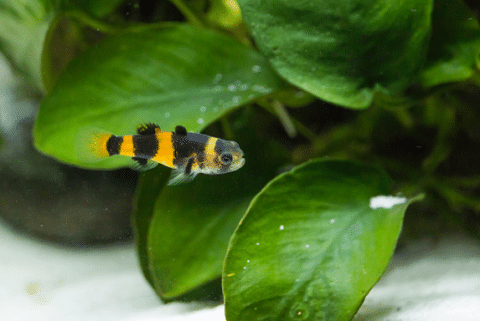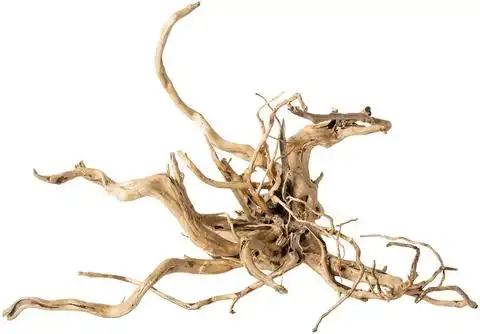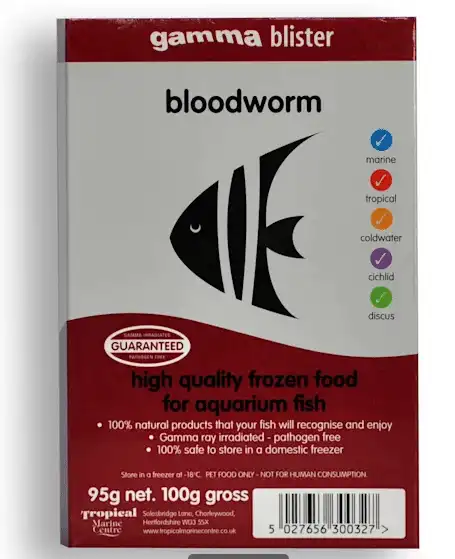Thank you for visiting! By the way… any links on this page that lead to products on Amazon and other stores/partners are affiliate links Aquarium Store Depot earns a commission if you make a purchase.
Are you ready to get acquainted with the beautiful bumblebee goby? These captivating striped fish are natives of the brackish waters located in Southeast Asia and could make an interesting addition to your aquarium. It is essential that a comprehensive understanding of their special needs be acquired before taking care of them. Thus providing a healthy atmosphere where they can thrive. So let’s explore how best one can give care to the bumblebee goby!
Key Takeaways
- Understanding the specific needs of Bumblebee Gobies is essential for their health and wellbeing.
- Creating a suitable tank for a Bumblebee Goby involves replicating their natural habitat with water parameters such as temperature, salinity, water hardness, pH levels, & filtration system.
- Group dynamics are important when selecting tankmates. Care must be taken to avoid incompatible species & provide a protein-rich diet for breeding triggers.
Species Overview
| Scientific Name | Brachygobius spp. |
| Common Names | Bumblebee Goby, Bumblebee Fish |
| Family | Gobiidae |
| Origin | Brackish water regions of Southeast Asia, including Indonesia, Thailand, and Malaysia |
| Diet | Carnivorous |
| Care Difficulty | Intermediate |
| Activity | Medium to low |
| Life Span | 2-3 years |
| Temperament | Generally peaceful but may display territorial behavior towards their own species or similar-looking gobies. |
| Tank Level | Bottom-dweller, spends most of its time near the substrate |
| Minimum Tank Size | 10 gallons |
| Temperature Range | 77-82°F (25-28°C) |
| Water Hardness | 9-19 dKH |
| pH Range | 7.0-8.5 |
| Filtration/Water Flow | Low |
| Water Type | Brackish Water Tanks |
| Breeding | Egg Layer |
| Difficulty to Breed | Difficult |
| Compatibility | Species only or with other small fish |
| OK, for Planted Tanks? | Yes |
Understanding the Bumblebee Goby
The Bumblebee Goby can be found living in the brackish waters of Southeast Asia. They possess a captivating look: yellow stripes covering their body and black spots on clear fins—not to mention those large bulbous eyes! To ensure these unique little creatures remain healthy, it is important for us to provide the Bumblebee Goby with suitable habitat conditions according to their specific requirements. Let’s dive into understanding what they need more closely now.
Origin And Natural Habitat
Bumblebee Gobies can be found in estuaries and mangroves with a brackish water mix of saltwater and freshwater across Asia, particularly Indonesia, Vietnam, and Thailand. To ensure the well-being of the Bumblebee Goby, it is important for aquarists to replicate their natural habitat, which includes rivers or streams full of this particular kind of mixture as well as providing adequate places to hide.
Physical Appearance

The Bumblebee Goby has an unmistakable look with their round head and bulbous eyes, paired with yellow stripes varying in hue. From paler to more vivid oranges, males of the species typically show greater vibrancy in color. Such features make these aquatic creatures a stunning addition to any tank or aquarium setup.
The Bumblebee Goby has a small head coupled with slender bodies give them quite a distinctive silhouette. The Bumblebee Goby small size provides plenty of options for for the aspiring nano fish keeper.
Size And Lifespan
The Bumblebee Goby, when fully grown, usually reach a size of 1.5 inches in length and have an average lifespan of 2-3 years. With proper maintenance and care, it is possible to extend its life expectancy even further.
For the wellbeing of your Bumblebee Goby, you make the investment to provide the environment they live in is suitable for them by providing clean water conditions while also keeping stress levels low as much as possible.
Creating The Ideal Tank Environment

Creating the ideal home for freshwater Bumblebee Goby requires re-creating their natural habitat in a tank. This means choosing an appropriate size, adequate substrate and decor as well as maintaining the right water parameters. Such conditions will ensure that these gobies can live healthily and happily within their environment at home. It is essential to consider proper sizing of the tank along with other factors such as mimicking its native habitat through suitable decorations which replicate underwater scenes typical to where they reside naturally, together with accurate measurements of key water qualities like pH levels etc., this will create optimal living spaces for your bumblebees!
Tank Size Requirements
Bumblebee Gobies should have a minimum of 10-gallon tanks for optimal living conditions. This is the ideal size suggested by experts in order to guarantee their health and longevity when multiple fish are kept together. A smaller tank size down to 5 gallons may be viable options if there’s only one or two specimens present, though owners must remember that this could prove inadequate as they grow larger over time. To ensure optimum results, it is best practice to provide them with an ample sized aquarium such as a large tank due to its many benefits in terms of wellbeing.
Substrate And Decorations
To offer a natural habitat for bumblebee gobies, it is suggested to use elements such as driftwood, rocks, and live plants. Ceramic tubes provide ideal hiding places that are essential for these fish’s security. Sand substrate creates comfort in the tank so they can feel at home like their natural environment offers. To achieve maximum safety and serenity, coconut hides must also be integrated into the aquarium setup as well.
Best Value
A budget priced and easy to use driftwood. A great beginner aquarium decoration
Water Parameters and Filtration
For the Bumblebee Goby, water temperature, salinity level, pH range, and flow rate should be taken into consideration. Optimal conditions for this freshwater fish include a temperature between 72-84 degrees Fahrenheit with salt grades ranging from 1.002 to 1.006 as well as a pH of 7, 8.5 in order to help prevent stress or shock that can lead to death when transitioning them into their tank environment from where your Bumblebee Goby was raised initially.
They are brackish water fish, so pure freshwater is not optimal for the. The use of a gentle filter like a sponge or internal filter is recommended due to their small size.
The Best Internal Filter
The OASE Bioplus is an internal version of the Biomaster Therm. It's the only internal filter I trust in aquascapes
Feeding And Nutrition
Bumblebee Gobies have specific needs when it comes to their diet, compared with other fish species. Feeding them requires providing a nutrient-rich meal using live or frozen foods that move since they tend not to eat flakes. To keep these amazing creatures in optimum health and contentment, an appropriate feeding frequency is essential too.
The best type of food and how often it should be given to bumblebee gobies must be determined. Be considered carefully, something especially important if you intend on keeping the little fishy company!
Preferred Foods
Bumblebee Gobies require protein to stay healthy, and live foods such as tubifex worms, blood worms, daphnia and brine shrimp provide that. They may also consume frozen items like rotifers or daphnia in lieu of the fresh variety. Flakes should be avoided because they don’t contain the right nutrients for these fish’s diet.
Frozen bloods are a great source of protein and a fish source fish naturally respond to. Very filling and works for just about any fish
Feeding Frequency
It is necessary to supply Bumblebee Gobies with either live or frozen food, twice each day and in limited amounts. This practice will help keep your fish healthy and can prevent overfeeding, which might cause health problems along with bad water quality.
Providing the ideal type of sustenance as well as appropriate feeding periods should be followed so that you can guarantee a cheerful life for your bumblebees gobies.
Social Behavior And Compatibility
Bumblebee Gobies require the company of their own kind to thrive. They do best when kept in groups of 6-7 fish inside a single-species aquarium. They may act shy initially, but have been known to become territorial if not properly socialized with other compatible species that won’t attempt to eat them. It is essential for keeping Bumblebees and any other cohabiting aquatic life balanced and content within the same tank environment – an understanding of these creatures’ behaviors as well as compatibility among all occupants being key factors towards establishing harmony.
Territorial Behavior
Bumblebee Gobies are very territorial, especially among males. Yet when it comes to members of the opposite sex, they usually do not show any hostile behavior. When considering keeping these fish in an aquarium environment, understanding their tendencies regarding territory is imperative and can’t be ignored. This knowledge will help ensure a successful tank setup for this species of fish as well as promote harmony between them all!
Group Dynamics (Ideal Group Size)
Bumblebee Gobies require the companionship of others and should be kept in groups of 6-7 specimens, either within a single species tank or with non-predatory fish. To ensure that all inhabitants enjoy peaceful living conditions, it is beneficial to keep them in larger schools so as to minimize any aggressive tendencies amongst members.
Hiding spots are essential for these active animals who will also need plenty of open swimming space. Rocks, driftwood and plants can help recreate their habitat whereas using a sandy substrate keeps them active and healthy.
Suitable Tank Mates
When it comes to their tank mates, Freshwater Bumblebee Gobies get along relatively well with compatible species such as larger shrimp. It’s essential that these fish are of similar size to the gobies and don’t have aggressive tendencies in order for them all to live happily together. This way, any potential issues or predation can be avoided altogether.
The biggest barrier with tankmates is their size, and their brackish water preferences. Most other species will not work for them in a brackish tank. Many brackish water species are going to be too large, like archerfish.
For these reasons, bumblebee fish are best in a species-only tank.
Inappropriate Tank Mates
The selection of suitable companions is necessary for maintaining a pleasant environment in the aquarium with Bumblebee Gobies. Fish too large, over-aggressive, or not compatible should be avoided when housing them. Since we talk about how they are best with their own kind, let’s take some time to list some of the obvious bad tank mates:
- Archerfish
- Scats
- Mono
- Dragon goby
It’s important to carefully consider what tank mates can cohabit peacefully with your Bumblebee Goby before making any choices on stocking your aquarium accordingly.
Breeding Bumblebee Gobies
Breeding Bumblebee Gobies requires a specific set up, such as a high-protein diet and water temperature of 84 degrees Fahrenheit. When these conditions are provided, females can lay their eggs in ceramic tubes or other similar vessels like shells and flower pots. They may produce around 200 eggs per batch.
Now let us examine the breeding process. From setting up the appropriate environment to raise baby fry after hatching. Proper care given to the needs of bumblebee gobies will ensure successful breeding results every time!
I supplied a video below from MaFishGuy, I’ll go over some details below:
Breeding Triggers
To get bumblebee gobies to breed, give them a high-protein diet and have optimum water parameters. Giving them healthy live food such as blackworms, will encourage them to breed even more.
Egg Laying And Hatching
Bumblebee Gobies can lay up to 200 eggs in ceramic tubes, shells or flower pots. After an approximate week-long incubation period, the fertilized eggs will hatch into little fry that then become a new generation of gobies. These fish are quite hardy and suitable for novice aquarists due to their relatively simple care requirements. All they need is basic equipment!
Raising Fry
It is important to provide Bumblebee Goby fry with the correct nutrition in order for them to grow properly. A great source of sustenance for these young fish at first can be infusoria, a type of small organism that is popular to use for young fry. As they mature, introduce larger live food such as brine shrimp and bloodworms/blackworms so that eventually their diet will mirror what their parents consume on an adult level. Maintaining nutritional balance throughout all stages of life is necessary if one hopes to see successful growth within this species.
Preventing And Treating Diseases
For Bumblebee Gobies, it is vital that their water conditions are kept to an optimal level since unfavorable settings can bring about illnesses and tension. Monitoring the parameters of the water should be done daily in order for these fragile fish to remain healthy.
In this section, we shall look at regular health issues and also measures that can be taken as precautionary methods when keeping Bumblebee Gobies. Making sure key components, such as checking on their aquatic environment frequently, will help guarantee a safe habitat for your fish.
Common Diseases
To prevent diseases in Bumblebee Gobies, it is important to ensure ideal water conditions, a well-balanced diet, and sufficient space so that they don’t become too crowded. Here are several common diseases to watch out for:
- Freshwater ich
- Velvet
- Bacterial infections
- Internal parasites
The most common causes for diseases to take hold are stress and lack of salinity. More is explained below.
Prevention Strategies
Stress is the #1 factor to keep low in order to keep your fish from getting sick. You can achieve this by keeping compatible tank mates and having adequate space to avoid any territorial aggression.
By maintaining cleanliness and caring for your aquatic inhabitants appropriately, you will guarantee the well-being of all bumblebee gobies within an aquatic setting, which may result in preventing future diseases from occurring too!
Frequently Asked Questions
Are Bumblebee Goby Aggressive?
Based on the reports of experienced aquarists, Bumblebee Gobies usually exhibit peaceful behavior and are not typically known to be aggressive. Though they may become more defensive when kept in less-than-ideal conditions or with fish, they are unable to flee from.
Are bumblebee gobies easy to take care of?
For those looking to get a bumblebee goby, be aware that they require devoted and careful maintenance of their environment as well as particular dietary requirements. These can make them demanding for inexperienced fishkeepers. If you are ready to invest the time into taking care of your pet fish, it will definitely pay off with an enjoyable experience!
How big do bumble bee gobies get?
Hailing from Indonesia, Bumblebee gobies make a delightful addition to any aquarium. These peaceful but territorial little fish typically reach an adult size of 1-1.2 inches and are known for their endearing presence in the tank.
This species is quite hardy when it comes to water conditions, making them great starter fish! All in all, this tiny creature can be perfect if you’re looking for something small yet with strong character traits that will bring you happiness.
How many bumblebee gobies in a 5 gallon?
In a five gallon tank, it is best to keep only one bumblebee goby due to its territorial habits and need for plenty of space. To provide companionship in the new home, we suggest purchasing dwarf peas as tankmates for your fish. This will give it an opportunity to create its own territory while not compromising on room available.
Are bumblebee gobies aggressive?
Bumblebee Gobies typically will not act aggressively, but they can become territorial if there is a lack of space or other fish present. To prevent this from occurring, make sure to provide them with ample swimming room and avoid overcrowding the aquarium area. That way these creatures remain at ease in their environment instead of exhibiting aggressive behaviors due to feeling threatened by nearby fish.
Closing Thoughts
For the optimal environment, it is essential to understand their natural habitat and create tank conditions suitable for Bumblebee Gobies as well as having compatible fish present in the same aquarium. With proper care and dedication, these fascinating little creatures can bring plenty of joy into any aquarist’s life if given appropriate sustenance from what they would get in their native home. Careful attention must be paid to creating a harmonious ecosystem so that your fish will lead healthy lives – this way you’ll have an enriching experience with them!
- About the Author
- Latest Posts
I’m thrilled that you found Aquarium Store Depot! Here you’ll find information on fish, aquariums, and all things aquatics related. I’m a hobbyist (being doing this since I was 11) and here to help other hobbyists thrive with their aquariums! I adhere to a high quality Editorial Process and Review products with real life field usage and practical analysis.








